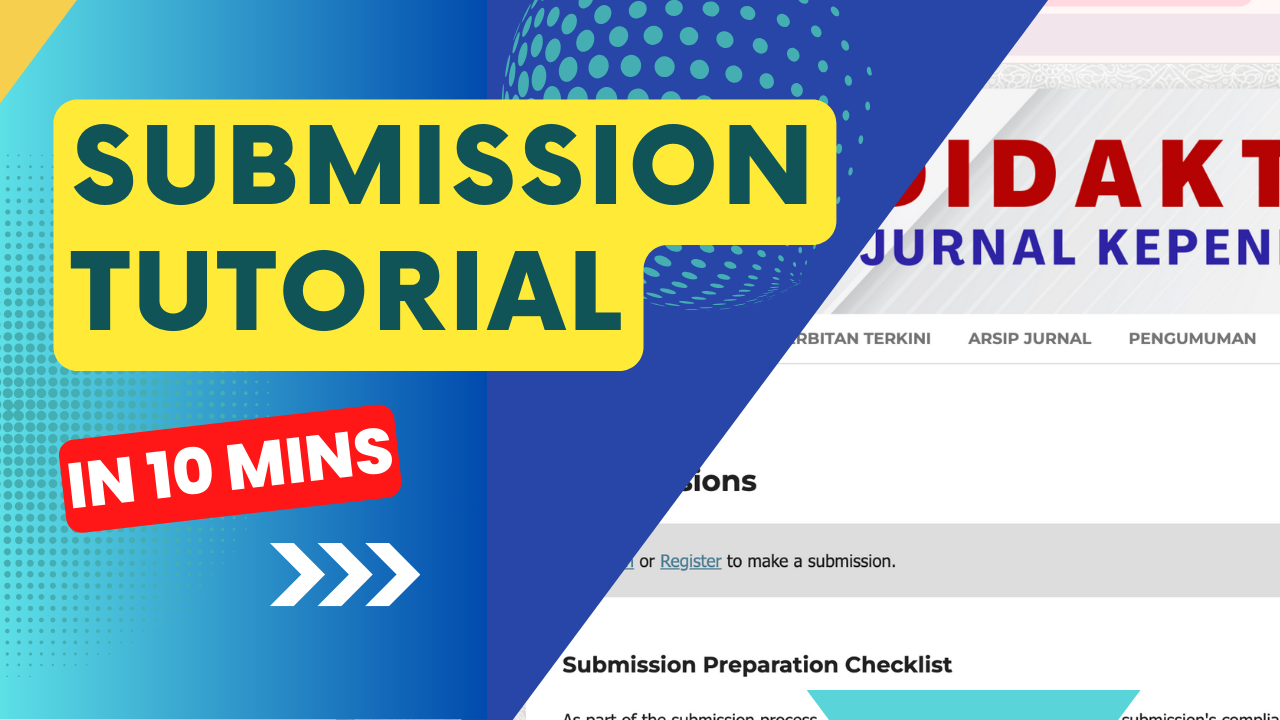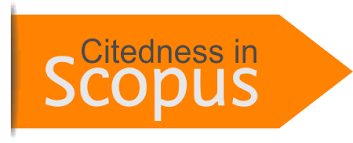Artificial Intelligence (AI) Modeling Technique to Improve Creative Thinking on Number Concepts for Early Childhood with Disabilities
Abstract
Downsindromes need media to help them focus on learning and understand the material about numbers. Subjects who are classified as active behavior may have creative thinking abilities that need to be explored. The purpose of this study was to determine how the application of video media with artificial intelligence (AI) articulation with modeling techniques and the results of improving creative thinking skills in down syndrome disabilities. Qualitative research with an approach to data analysis using descriptive was conducted to obtain data. The method of interview, observation with the help of video recording was used in data collection. The results of this study state that learning carried out using video media with artificial intelligence articulation with modeling techniques can be applied well, indicated by SDS can be active and focused in participating in learning activities. The increase in creative thinking skills from the beginning has not appeared at all creative thinking skills to the results obtained that SDS has the ability to think creatively with 2 indicators appearing, namely flexibility and originality.
Metrics
References
Abdulmunem, R. A. (2023). Artificial intelligence in education. In Comparative Research on Diversity in Virtual Learning: Eastern vs. Western Perspectives. https://doi.org/10.4018/978-1-6684-3595-3.ch012
Andriani, D., Widada, W., Herawaty, D., Ardy, H., Nugroho, K. U. Z., Ma’rifah, N., Anggreni, D., & Anggoro, A. F. D. (2020). Understanding the number concepts through learning Connected Mathematics (CM): A local cultural approach. Universal Journal of Educational Research, 8(3), 1055–1061. https://doi.org/10.13189/ujer.2020.080340
Bunt, B. J., Grosser, M., & van Tonde, D. (2022). The creative use of Thinking Maps to embed Blooms’ Taxonomywithin teaching, learning and assessment. Journal of Cognitive Education and Psychology, 6(4), 346–372.
Creswell, J. W. (2014). Research Design:Qualitative,Quantitative, and Mixed Methods Approacches 4th edition (V. Knigh (ed.); 4th ed.). SAGE Publications, Inc. https://www.ptonline.com/articles/how-to-get-better-mfi-results
Hudha, A. M., Amin, M., Sumitro, S. B., & Akbar, S. (2016). Improving OIDDE Learning Model for Ethic and Values Learning. In Foreword From Editor.
Ivanova, E. (2020). Modeling of educational and creative environment for children with special educational needs. December 2019. https://doi.org/10.33422/worldte.2019.12.930
Kellems, R. O., Eichelberger, C., Cacciatore, G., Jensen, M., Frazier, B., Simons, K., & Zaru, M. (2020). Using Video-Based Instruction via Augmented Reality to Teach Mathematics to Middle School Students With Learning Disabilities. Journal of Learning Disabilities, 53(4), 277–291. https://doi.org/10.1177/0022219420906452
MalAllah, M. B., Alshirawi, M. I., & Al-Jasim, F. A. (2022). The Effect of a Program Based on TRIZ Theory to Develop the Creative Thinking Skills Among Male Students with Mild Intellectual Disability. International Journal of Systematic Innovation, 7(2), 1–21. https://doi.org/10.6977/IJoSI.202206_7(2).0001
Panglipur, I. R. (2023a). Analisis Gaya Belajar dan kemampuan Literasi Matematika Pada Tuna Rungu. Math-Edu: Jurnal Ilmu Pendidikan Matematika, 8(April), 37–46. https://doi.org/https://doi.org/10.32938/jipm.8.1.2023.24-36
Panglipur, I. R. (2023b). ANALYSIS OF LEARNING STYLES AND MATHEMATICAL LITERACY SKILLS OF THE BLIND. Journal of Research, Review and Educational Innovation, 1(3), 102–108. https://doi.org/https://doi.org/10.47668/jrrei.v1i3.918
Pochon, R., Touchet, C., & Ibernon, L. (2022). Recognition of Basic Emotions with and without the Use of Emotional Vocabulary by Adolescents with Down Syndrome. Behavioral Sciences, 12(6). https://doi.org/10.3390/bs12060167
Satsangi, R., Billman, R. H., & Raines, A. R. (2021). Comparing Video Modeling to Teacher-Led Modeling for Algebra Instruction with Students with Learning Disabilities. Exceptionality, 29(4), 249–264. https://doi.org/10.1080/09362835.2020.1801436
Vanutelli, M. E., Cortinovis, V., & Lucchiari, C. (2022). The relationship between creative, cognitive, and emotional competences in Intellectual Disability. A case report. Life Span and Disability, 25(1), 121–149.
Copyright (c) 2024 indah rahayu Panglipur

This work is licensed under a Creative Commons Attribution 4.0 International License.
Dengan mengirimkan naskah artikel, berarti penulis setuju dengan segala kebijakan yang ditetapkan oleh jurnal dan penerbit.
Penulis menyatakan bahwa:
- kebijakan ini telah diketahui dan disetujui bersama oleh semua penulis;
- naskah artikel belum dipublikasikan secara resmi sebelumnya di media ber-ISSN atau ber-ISBN yang terdaftar, kecuali dalam bentuk abstrak atau sebagai bagian dari materi kuliah, atau skripsi/tesis/disertasi yang tidak diterbitkan;
- naskah tidak sedang dalam proses editorial dan dipertimbangkan untuk publikasi di tempat lain;
- publikasi naskah ini telah disetujui oleh semua penulis, institusi afiliasi penulis, otoritas yang bertanggung jawab, dan lembaga di mana kegiatan telah dilakukan;
- naskah berisi materi yang aman dari pelanggaran hak cipta;
Perjanjian Hak Cipta dan Lisensi
- Penulis memiliki hak cipta dan hak kepemilikan lainnya yang terkait dengan artikel.
- Penulis memiliki hak dan diizinkan untuk menggunakan substansi artikel untuk karya-karya penulis berikutnya, termasuk untuk keperluan bahan/materi kuliah dan buku.
- Penulis menyerahkan hak publikasi pertama kepada jurnal dengan di bawah Lisensi Creative Commons (CC BY 4.0).
Pernyataan Lisensi CC BY 4.0
Anda diperbolehkan:
- Berbagi — menyalin dan menyebarluaskan kembali materi ini dalam bentuk atau format apapun;
- Adaptasi — menggubah, mengubah, dan membuat turunan dari materi ini untuk kepentingan apapun, termasuk kepentingan komersial.
Pemberi lisensi tidak dapat mencabut ketentuan di atas sepanjang Anda mematuhi ketentuan lisensi berikut ini.
- Atribusi — Anda harus mencantumkan nama yang sesuai, mencantumkan tautan terhadap lisensi, dan menyatakan bahwa telah ada perubahan yang dilakukan. Anda dapat melakukan hal ini dengan cara yang sesuai, namun tidak mengisyaratkan bahwa pemberi lisensi mendukung Anda atau penggunaan Anda.
- Tidak ada pembatasan tambahan — Anda tidak dapat menggunakan ketentuan hukum atau sarana kontrol teknologi yang secara hukum membatasi orang lain untuk melakukan hal-hal yang diizinkan lisensi ini.






.png)








